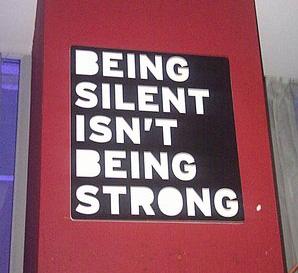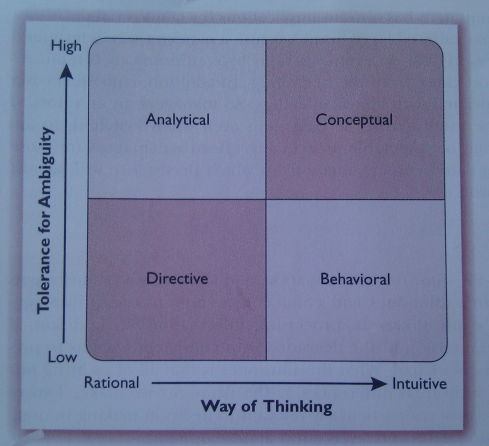
Being silent isn't being strong. A wall sign I saw in a pub in Liverpool earlier this year.
This is a summary post of the topics I have been writing about during 2011. This has been an amazing year of social networks for me. I have learned a lot from hundreds of people around the globe. I highly value the network of the brilliant, talented, and trustworthy people I have the pleasure to collaborate with.
Thank you all for 2011, you know who you are!
—
As more social business environment and the new ways of working are changing the organizations and reforming the entire business landscape – I’ll find it important and very interesting to study how we create and innovate, make decisions, and further how better mutual understanding can be created. We all know that the existing organizational structures needs a refresh, and that we, knowledge workers, should be passionate about helping our organizations to be more open, learning organizations.
One among many answers to this challenge is to focus on recognizing the value of ‘discovering’ people in your global network and further interacting and connecting with them on new levels. Naturally, different cultures and communication styles can then collide, softly or sometimes violently. Let me share a story about the Finnish way.
The Finnish Habit of Positive Silence
We Finns can easily be silent in company with other people. It’s natural to us. Before the social media we used to love text messages, a Finnish innovation by the way, as you could express yourself shortly and efficiently. Foreigners find our momentarily silence odd – or fascinating. Professor of Communication Donal Carbaugh, from University of Massachusetts at Amherst, have written an excellent paper about this – Silence and Quietude as a Finnish“Natural Way of Being” [pdf], with the following description:
“A Finnish communication code that structures some cultural scenes as occasions for positive silence, exhibiting a social model of personhood for which this is a valued, respected, and natural practice.”
Another expression on this topic is this short article of the Helsinki Times – No small talk please, we’re Finnish, in which freelance journalist Susan Fourtané describes her experiences:
“I particularly enjoyed the thoughtfulness and the moments of silence in between, giving space for observing our own thoughts before speaking. Yes, you have heard it right. Finns don’t do small talk. They don’t think a moment of shared silence is awkward. On the contrary, it is part of the conversation. A direct question gets a direct answer. There is no nonsense talk about nothing. There is no asking “How are you?” ten times until someone says something else, or stating the obvious. Finns are more interested in how you think, how you perceive Finland or what keeps you in this small and cold country, as they refer to beautiful and peaceful Finland.”
We Finns definitely do have lots to learn about the more social and collaborative way of work, but I think we also have something valuable to share with our fellow citizens from other cultures and nations. The habit of small talk is a part of Anglo-American cultural sphere, and please note that I am not saying that there is something wrong with it. Our different habit, the positive silence, is as strange for foreigners as the excessive small talk is to many of us. All in all, what is needed is openness and curiosity in front of the different communication habits.
My interpretation of Professor Carbaugh’s great notion of positive silence is: we are taking time for thinking and reflecting. It is basically about respect towards your discussion partner. I do believe that occasionally ‘shutting up our mouths’ enables better listening, which in the best case this can lead to better understanding. Naturally, being too silent (also typical here) or silent in the wrong situations is nothing to recommend.
The Wrong Kind of Silence
Nilofer Merchant has marvelously described the wrong kind of silence. She tells a story when she was working at Apple: when she saw the problem clearly and others didn’t, she didn’t think she had the right or the capabilities to speak out – she was too worried about being wrong. This kind of ‘wrong’ silence is hurting the outcome, she continues, and emphasizes the importance of thinking together:
“…minority viewpoints have been proven to aid the quality of decision making in juries, by teams and for the purpose of innovation. Research proves then even when the different points of view are wrong, they cause people to think better, to create more solutions and to improve the creativity of problem solving.”
She calls after courage to speak and to take risks. “Enthusiasm, naïveté, fear of repercussions, conformity to the group norms, and even wisdom are all things that can influence whether someone speaks up or not.”
Her thinking inspires me to researching this topic of encouragement, listening, and mutual respect for better outcome and understanding.
The Culture of Curiosity, Listening and Respect
As an entrepreneur I highly value discussions where there are no pre-set ‘rights and wrongs’, where openness and curiosity are self-evident, and where mutual respect gives room for different kinds of thinking and thoughts. If ever now we need this kind of approach. And if in any organization it is in a startup or growth company that this is vital. There must be a place for expressing our ideas freely and also to take the time for reflection.
I truly believe that creativity, innovation, and better decision-making, both in startups and in established organizations, require at least some investments in these three capabilities:
- Applying so-called Systems Intelligence,
- Recognition of the value and importance of Serendipity (the weak links and the edges),
- Recognition of the value and importance Listening.
Luckily many of these are a natural part of the startup DNA. A startup company benefits from an open and cooperative style; we need use both sides of our brains and become better listeners. Let me explain.
Firstly, the Systems Intelligence Theory by Finnish Philosopher and Professor Esa Saarinen and his fellow researchers describe the two ‘thinking systems’ we all have: System 1 thinking as automatic, associative, and intuitive. System 2 thinking is dominating in the work places: you better be strictly rational. In every day work situations the System 2 thinking is active and often unintentionally blocking System 1 thinking – and therefore narrowing the possibilities at hands. When both systems are active, there’s a room for intuition, interaction and emotions – and for innovation, decision-making, and shared understanding. Being strictly rational in your work role is not working anymore. We need to utilize our full potential.
Secondly, it is important to realize the value of serendipity and of being active ‘on the edges’, as John Hagel, Lang Davison & John Seely Brown describe in the Power of Pull model. I agree with them that the cloud-enabled new platforms for serendipitous encounters lead to new kind of innovation, decision-making and leadership. We can now easily meet companies and people we did not know existed, curious expedition is needed. We gather around ‘social objects’ and connect, and build relationships for mutual learning and helping.
The third capability is about the value and importance of listening. I serendipitously bumped into a beautiful TED Talk by Julian Treasure. In his talk Julian presents the filters that we use when listening and through which the reality is created for us: culture, language, values, beliefs, attitudes, expectations, and intentions. He also shares his five tips for better listening. I found the fifth one, his RASA model, beautiful and absolutely something every one of us should apply in our daily life and the decision-making situations. Acronym RASA comes from Receive, Appreciate, Summarise, Ask – these four verbs should be part of our personal decision-making, learning processes, and leadership. Julian says aptly: Conscious listening creates understanding. This is not too far away from the positive silence thinking.
The discussion around topic of listening is not a new one; see this excellent old article published in Harvard Business Review in 1957: Listening to People. The article states that “the effectiveness of the spoken word hinges not so much on how people talk as on how they listen.” There are several gold grains in it, as for example “when people talk, they want listeners to understand their ideas.“ Touche!
Trust-based Collaboration
What it is I mean with all this talk about Finnish traits and the social business? Let me sum it up with three examples, all originated from Finland; Linus Torvalds of Linux Foundation, Mårten Mickos of MySQL/Eucalyptus Cloud, and the newcomer Peter Vesterbacka of Rovio/Angry Birds. I personally experience all three fellow entrepreneurs as great examples of appliers of the communication style and culture that have deep origins in the ‘Finnish way’. All of them are successful in their businesses and more or less global citizens, but none of them have entirely thrown away their Finnish roots and foundation.
It’s not only about the substance, their wide knowledge, experience, and creativity, but also about their specific networking and collaboration skills which could be described as trust-based collaboration (and I am pretty sure that some positive silence is included). The fruitful network of relationships can be based on acknowledging, helping, and appreciation of the people you meet and work with which in turn create trust between individuals. Linus, Mårten and Peter are mastering is this. And they are passionately curious.
On top of all this we have now the various social communities which are the true leverage points of the cultural transformation, both inside and outside of the organization, between the organizations, individuals, and nationalities. Trust and successes can be built on this.
—
Happy New Year 2012! Let your year be filled with happiness, health, serendipity, and love!




